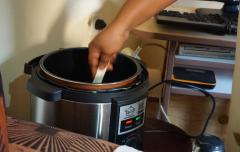Derisking Sustainable Electrification of Health Facilities
Kindly note that this is a closed event (i.e., By Invitation Only), limited to a number of 30 participants, (donors and development partners)
Background
Providing high-quality health care is virtually impossible without access to reliable electricity in health facilities. And yet, close to one billion people globally are served by health-care facilities with no electricity access or with unreliable electricity. Per a recently published report led by WHO, World Bank/ESMAP, SEforALL, and IRENA, 12% and 15% of health facilities in South Asia and Sub-Saharan Africa, respectively, have absolutely no access to electricity. The huge energy access gap in health facilities calls for increased investments: an estimated 5 billion USD is needed to reliably electrify health facilities in most developing countries in these two regions, complemented by business models to deliver sustainable solutions.
Support from donors is critical to bridge the gap in financing. Off-grid solar presents a key opportunity to provide clean, reliable, quickly dispatchable, and cost-effective electricity to health institutions that wouldn’t otherwise have access. But ensuring that these solutions can provide electricity on a long-term, sustainable basis comes with challenges. If donors continue to support health facilities with grants to cover the up-front costs, government agencies may not have the incentive to promote an operational model that encourages sustainability. The focus should be on how health infrastructure and programs can be sustainable, improve
health outcomes, and adapt to a changing energy and climate landscape. Energy companies that are best suited to carry ongoing energy services (Energy-as-a-Service model, EaaS) struggle to serve public facilities due to repayment risks and other challenges. Donor/government funding needs to thus incentivize private sector solutions, such as EaaS models to improve the system sustainability of health electrification programs. Donor programs should be structured to promote long-term sustainability and fill funding gaps to achieve that goal. Refer to the publication on this topic for more information. The publication refers to new models for making health facility electrification more sustainable (e.g. EaaS). However, it makes the case for private sector investments/participation to be derisked with the help of donors for these models to be workable.
Objective
This discussion with donors, DFIs, investors and other important partners on the margins of the TEA forum is intended to:
- Present and discuss some sample energy-as-a service initiatives, highlighting the
similarities and differences - Discuss the risks facing EaaS models and opportunities for mechanisms to derisk them
- Highlight emerging de-risking initiatives/instruments (for the purposes of attracting donor support and for securing government and private sector buy in)
- Provide a platform for donors and development partners to offer suggestions on designing and deploying derisking measures
- Announce a call to action for donors and development partners to offer strategic and financial support to derisking instruments presented at the meeting and beyond
Moderator: SEforALL
Agenda
| Time | Topic | Speaking Participants |
|---|---|---|
| 5 min | Opening Remarks | TEA |
| 10 min | Objectives and Run-of-Play | SEforALL |
| 15 min | Current state of the Powering Healthcare sector and the need for sustainable business models | SEforALL |
| 30 min | A brief overview of existing and planned initiatives that have variations of the Energy as A Service Model and the potential for derisking instruments | Identified partners |
| 1.5 hour | Presentation of potential derisking mechanisms. For instance, • SEforALL pilot derisking instrument for Kenya and India • Role of the Italy-UNDP Energy Partnership in unlocking finance • WBG derisking instrument for electrifying public institutions | Identified Partners |
| 1 hour | Lunch | |
| 1.5 hour | Moderated discussion: This will focus on common risks observed across different EaaS models, common themes across derisking mechanisms, what is missing in them, and how can the sector work together to instill confidence in the private sector. Break-out groups may be considered | All participants |
| 30 min | Call to Action for Collective Sectoral Action as well as Provide Strategic and Financial Support for Derisking | SEforALL |

